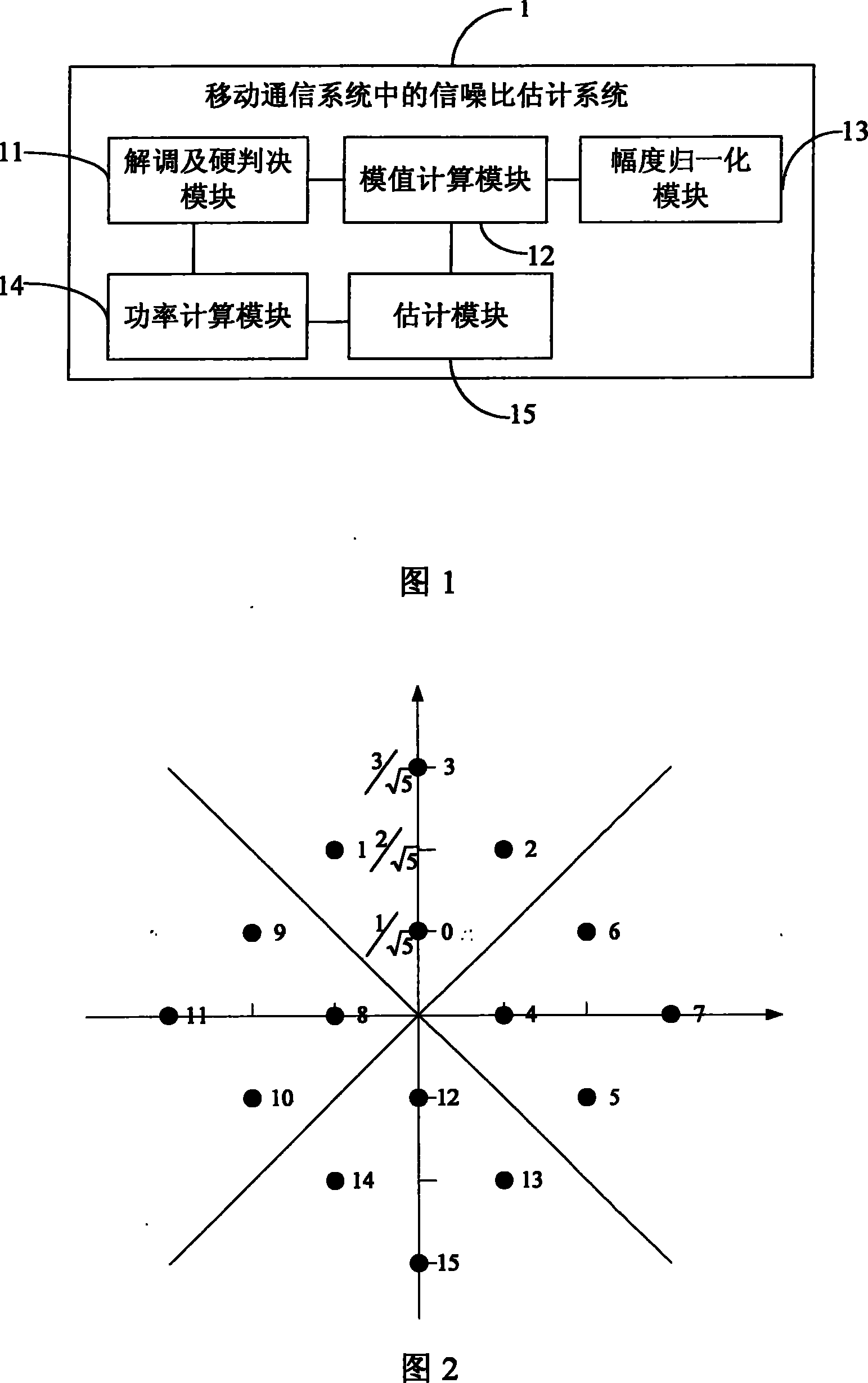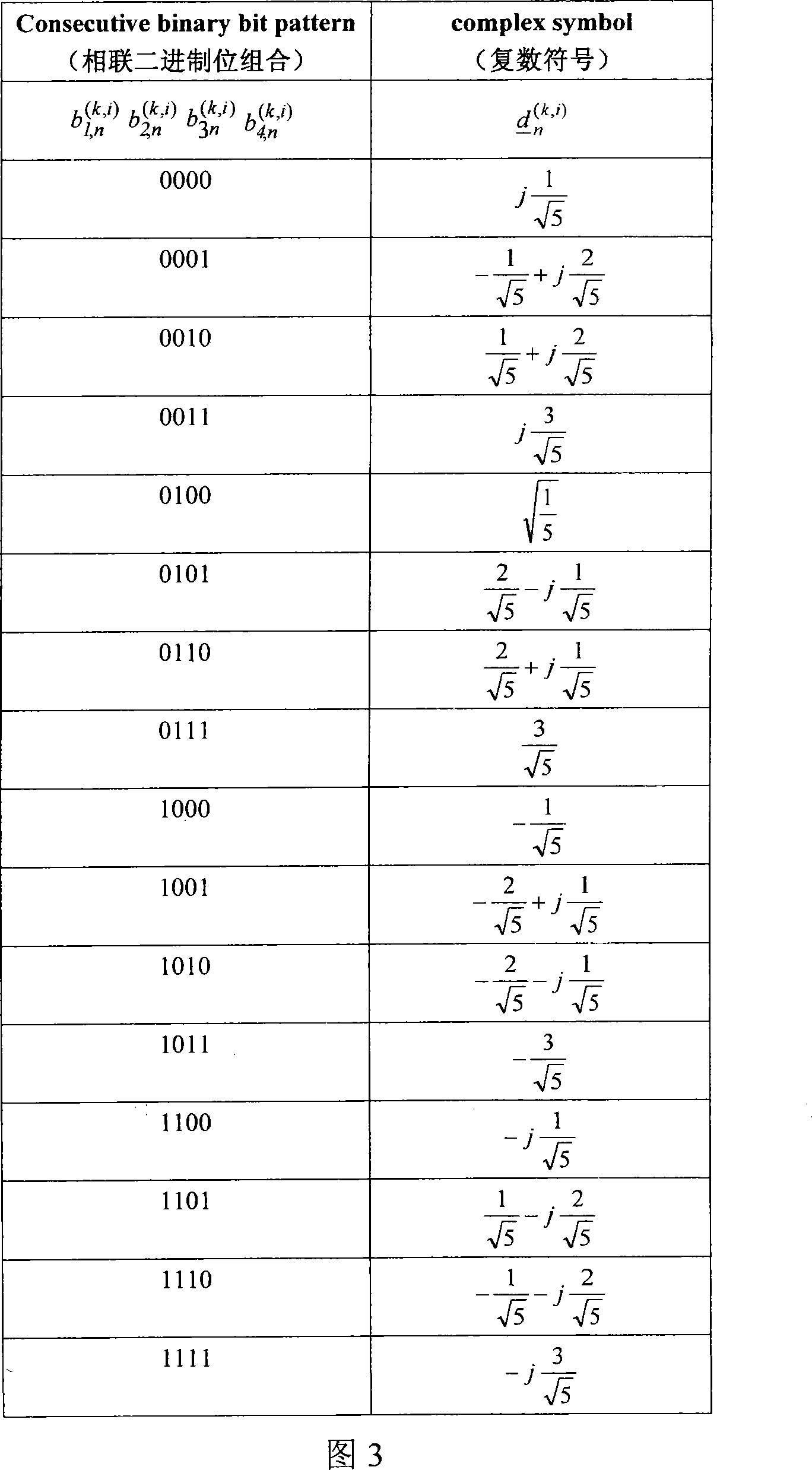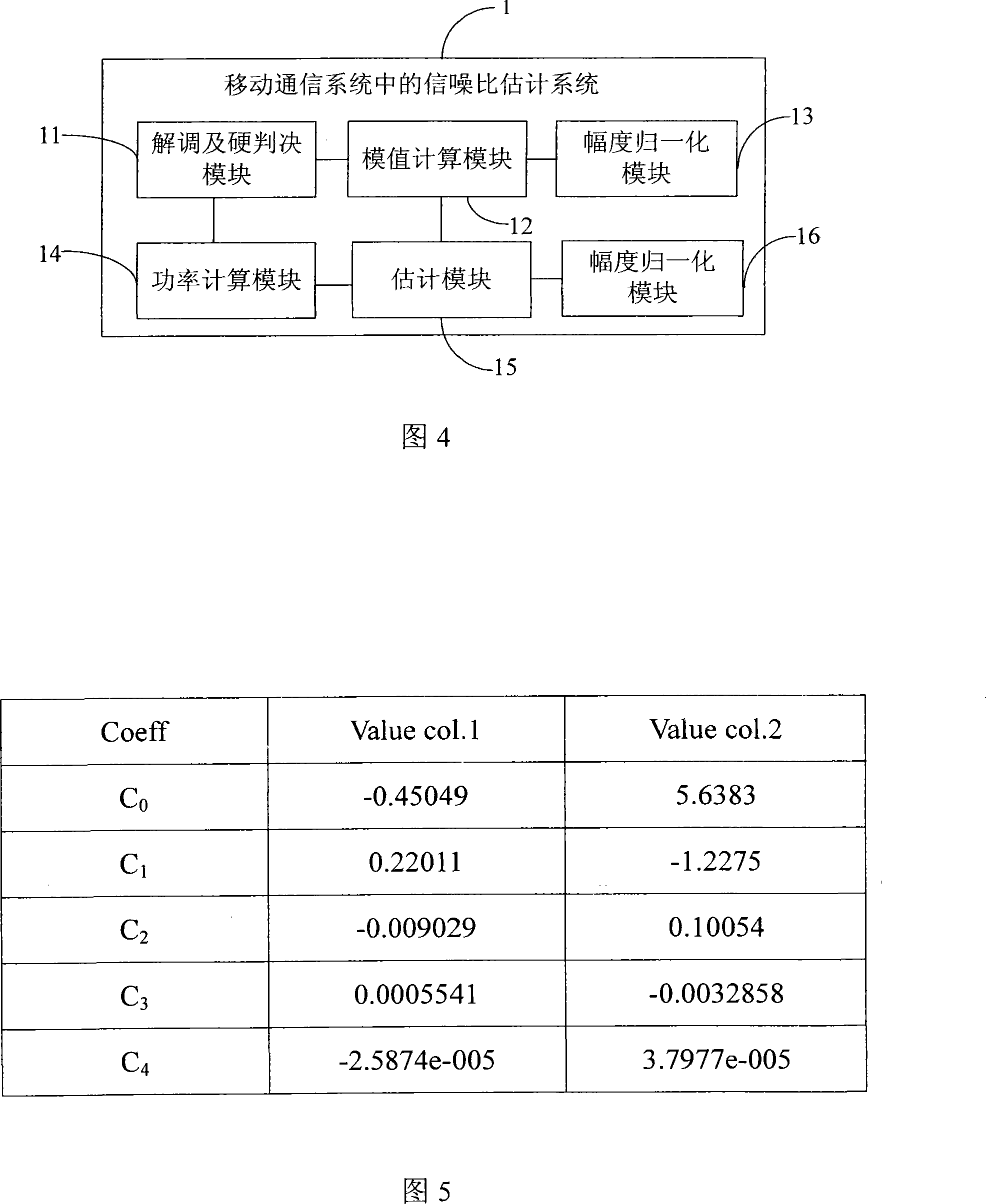Signal-to-noise ratio estimating method in mobile communication system and system thereof
A technology for mobile communication system and signal-to-noise ratio estimation, which is applied in the field of communication and can solve the problems of difficulty and inconvenience in demodulating the signal-to-noise ratio at the receiving end
- Summary
- Abstract
- Description
- Claims
- Application Information
AI Technical Summary
Problems solved by technology
Method used
Image
Examples
Embodiment Construction
[0049] In order to make the object, technical solution and advantages of the present invention clearer, the present invention will be further described in detail below in conjunction with the accompanying drawings and embodiments. It should be understood that the specific embodiments described here are only used to explain the present invention, not to limit the present invention.
[0050] The basic idea of the present invention is: when the mobile communication system adopts the MQAM modulation mode, first demodulate the symbols output by the joint detection of the MQAM modulation constellation diagram and perform hard judgment; after that, calculate the corresponding point of the bit on the constellation diagram after the hard judgment The modulus value of each symbol is used to normalize the amplitude of each symbol by using the corresponding modulus value after each symbol is judged, and then the signal power and noise power are calculated to obtain the signal-to-noise ra...
PUM
 Login to View More
Login to View More Abstract
Description
Claims
Application Information
 Login to View More
Login to View More - R&D
- Intellectual Property
- Life Sciences
- Materials
- Tech Scout
- Unparalleled Data Quality
- Higher Quality Content
- 60% Fewer Hallucinations
Browse by: Latest US Patents, China's latest patents, Technical Efficacy Thesaurus, Application Domain, Technology Topic, Popular Technical Reports.
© 2025 PatSnap. All rights reserved.Legal|Privacy policy|Modern Slavery Act Transparency Statement|Sitemap|About US| Contact US: help@patsnap.com



